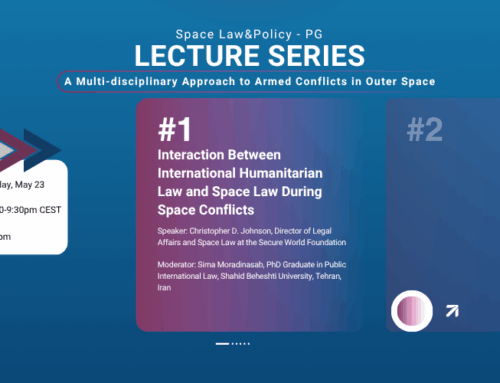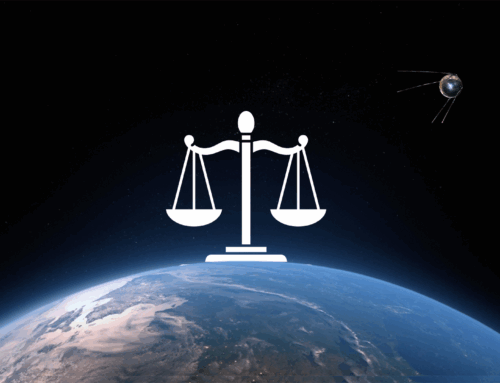Nowadays, satellites are part and parcel of societies around the world: from telecommunications to global navigation systems, they are used for both commercial and scientific purposes. However, satellites also have non-peaceful applications. Since the Cold War, military satellites have been used for the creation of safe communication channels, for maneuverability and coordination of military forces (i.e. the Global Positioning System (GPS)), and even for the targeting of missiles. There is, however, a different use of satellites, one that is not directly linked with military operations: the so-called ISR (Intelligence, Surveillance, Reconnaissance).
Since the Cold War, military satellites have been used for the creation of safe communication channels, for maneuverability and coordination of military forces (i.e. the Global Positioning System (GPS)), and even for the targeting of missiles.
Earth observation satellites are able to track movements of troops and equipment, space-based radars are used to track aircraft and naval vessels, while satellites for the study of X-ray sources and solar activities, like the SOLRAD (Solar Radiation) series of US satellites, are able to intercept radio waves. Their use is wider than the traditional application for nuclear explosion detection and missile early warning systems. In ISR activities, even civilian satellites are a precious source of data and information. Meteorological satellites provide weather information crucial for the conduct of operations without the risk of attrition caused by atmospheric conditions. Scientific and commercial satellites can sell their services to armed forces, thus providing them data without being under direct control of the military.
In all these applications, satellites indirectly become instruments of war. They are not, however, used as weapon platforms, as that would be in violation of the current international consensus against the militarization of outer space. While the provisions of the Outer Space Treaty of 1967 clearly forbid the deployment of weapons of mass destruction and the construction of military installation, it does not foresee the use of satellites as “indirect” instruments of war. Therefore, any attempt to regulate their use in warfare needs to consider the inherent dual-use nature of satellite data.
The same issue has emerged with another space technology: space launchers. The rockets used to launch a satellite into outer space can also carry a nuclear warhead or other offensive military device. In order to avoid the proliferation of this technology, an attempt to create an international regulation for missiles has been realized by the Missile Technology Control Regime (MTCR), promoted by the G7 in 1987. It does have a significant limitation, however, which is important to note in order to understand how difficult it will be to implement a similar solution for satellites. The MTCR is not legally binding and it is not a treaty. In fact, it is an informal agreement that can be useful in dissuading countries without space launch capabilities, rather than avoid countries that produce missiles for military purposes to sell them. It is up to the State to abide by the MTCR.
The MTCR is not legally binding and it is not a treaty. In fact, it is an informal agreement that can be useful in dissuading countries without space launch capabilities, rather than avoid countries that produce missiles for military purposes to sell them.
Any attempts to regulate satellite technology will face the same issue. Regulating a dual-use technology at the international level is difficult because of the “indirect” application of satellites in war. This is the main obstacle that needs to be tackled. The optimal solution would be an international body linked to the United Nations, like the International Atomic Energy Agency, combined with an international treaty on the use of satellites in war. Put together, these two solutions could regulate their status during a conflict and the criminal responsibility in case of war crimes and violation of human rights.
Since it will be impossible to prevent a State with space launchers and satellite capabilities to use them without its approval, the best solution is to work on two levels. If a State wants to “blind” its adversary, it will target their satellites. An anti-satellite weapon would impact other satellites belonging to States that are not part of the conflict. Therefore, a first step could be the creation of soft law and principles that would consider unacceptable the destruction of satellites, due to the potential collateral damage caused by space debris. If this principle is accepted, it would be easier to gradually extend the protection of satellites to other forms of non-kinetic attacks.
At the institutional level, the creation of a consensus on the no-targeting of satellites could be achieved through a step-by-step process. On the other hand, since private actors are becoming increasingly relevant for outer space activities, it would be useful to dissuade satellite firms and operators to share data with States that could use it in ways that violate the UN charter. In order to do so, it is possible to start from the current consensus regarding penal responsibility for those complicit to commit international crimes. A company should avoid doing business with States that could use satellite data for war crimes or other violations of humanitarian law. The warrant by itself would be reputational damage. It could also discourage moral hazard by private actors, since they know they will be prosecuted. The sooner a consensus on the non-peaceful use of satellites is reached, the better it will be for all nations and for the peaceful conduct of outer space activities.
This piece was written by Danilo delle Fave. Danilo is a PhD student in Political Science, curriculum Geopolitics and History of International Relations, at the University of Pisa. His research project is focused on the techno-scientific diplomacy between Italy and Germany in the aerospace sector during the Cold War. He is also a military and intelligence analyst for ITSS Verona and has been interviewed by several international news organizations like France24 and Al-Jazeera.







